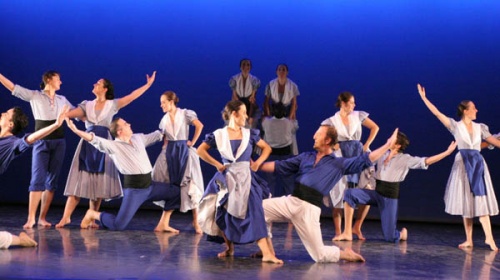Esbart Maragall
The Esbart Maragall grew out of a traditional dance school that started up in the 1930s at the Casal Catòlic de Sant Andreu del Palomar. After the Civil War (1936-39) the group had to rename themselves the Esbart Juventus, because Franco's regime banned any reference to the Catalan poet Maragall.
In fact, there was a split in the 1940s that produced the Esbart Verdaguer, which has now disappeared. The group's most active period coincided with the opening of its first show, in 1993. That was when they changed their style, combining traditional dance with a richer choreography.
The Esbart Maragall's main section is its dance corps, whose dancers are over 16. They work on reviving and popularising traditional Catalan dances, as well as new dances with traditional roots. The dance school is responsible for the children's section and trains the new dancers, who are split into four groups: the Picarols, aged 3-5; the Pedretes, aged 5-8; the Cercolets, between 9 and 11, and the Castanyoles, who start from eleven. The Maragall school is the first children's dance school to have put on its own show performed entirely by children. The third section is the Grup Juventus, which includes the group's older dancers, the parents of the children in the dance school and various traditional dance enthusiasts without any training. "Juventus", the name adopted in the years following the Civil War, was chosen as a tribute to all the dancers that had passed through the group in the previous decades.
From the beginning, the Esbart Maragall has been linked to the Casal Catòlic de Sant Andreu del Palomar, where it is based along with other cultural associations. And with them it plays an active part in all the joint events, such as the Pastorets, the pantomime of the Christmas story, and the activities organised on the Casal's members' day.




